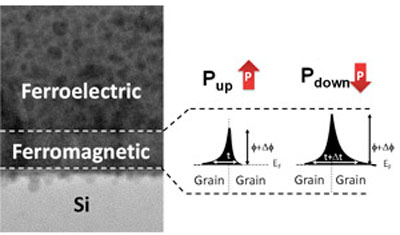| Posted: Oct 02, 2015 |
Horizontal magnetic tunneling in a field-effect device integrated on silicon
(Nanowerk News) The choice for energy-efficient technologies is not a matter of price choice but it is slowly turning into a matter of heat. A work recently published in Nature’s Scientific Reports ("In-plane tunnelling field-effect transistor integrated on Silicon") suggests devices fabricated directly on Silicon with magnetic tunnel junctions governed by electric pulses, which means without current and minimizing the problem of overheating.
|
 |
|
Large data servers and computer clusters are in such need of cooling that even their geographical location is a major engineering decision. Indeed, Reuters reported the decision of big companies of setting its European core systems up to store large amounts of data in Sweden just to “take advantage of the climate in Lulea, among the coldest in Sweden, to cool tens of thousands of servers”. This problem has even bigger planetary consequences, as data storage centers are already singled out among the biggest contributors to global warming. Every contribution in the direction of reducing calories is strongly welcome in the present scenario of escalating data traffic and information processing.
|
|
A team of scientist across Europe, comprising Dr. Ignasi Fina, from the ICN2 Oxide Nanoelectronics Group, Dr. Xavier Martí, from IGS Research and ICN2 collaborator, and Prof. Marin Alexe from the University of Warwick (UK) and coworkers from Germany and Czech Republic, has recently contributed their grain of salt to this hot topic. Dr. Ignasi Fina is the first author of the article in Nature’s Scientific Reports, with Dr. Xavier Martí and Prof. Marin Alexe as the last ones.
|
|
Data storage technologies are split between the ones which write with electrical current discharges and the ones which write using voltage pulses with no need of electrical current flow. The latter, which include ferroelectric memories, a field in which the ON group led by Gustau Catalan is very active, are currently confined to ultra-low power applications and found their niche market in several contact-less transport memory cards or the automotive sector where the need for energy-efficient solutions is unavoidable. However, the media are realizing slowly but surely that the choice for energy-efficient technologies is not a matter of price-point choice but it is slowly turning into a matter of heat – without choice.
|
|
During the last years, a flurry of research has been focused on multiferroic materials, trying to merge record-breaking information areal densities achieved by magnetic electrical-current based technologies with an energy-efficient electric-pulse based approach. Most of the research on this field has been carried out on perfect single-crystalline structures where theory met experiments with success. However, the growth of perfect structures requires growth techniques that hinder their scalability. By circumventing the need for structural perfection, the work recently published at Scientific Reports delivers a self-assembled in-plane array of magnetic tunnel junctions governed by voltage pulses. Of particular relevance, the devices have been fabricated directly on Silicon, on step further for the integration of the devices into realistic prototypes.
|

